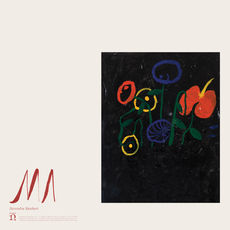Devendra Banhart explains how fear inspires him, his need for renewal & the uniqueness of Flying Wig
QobuzNow with Mexican Summer, Devendra Banhart has called on his faithful friend Cate Le Bon to produce his eleventh album. Concocted in the Topanga canyon, where a host of artists - including a certain Neil Young - find inspiration, Flying Wig features synthesizers... a first for this quintessentially folk craftsman. Without icing over the emotion, quite the contrary, they delicately and slowly sketch out almost dystopian twilight landscapes, making this an intimate record, sounding like no other.
However, this strange atmosphere emanates more from its genesis than from its synthetic nature. Before writing Flying Wig, Banhart recounts burning twenty years’ worth of notebooks containing information about his albums, which he kept preciously in his larder. It’s a terrifying but powerful act of rebirth, part of the creative process of the songwriter who is eternally dissatisfied with his work, constantly cultivating his curiosity for the otherworldly and finding in his deepest fears the subject of his art.










